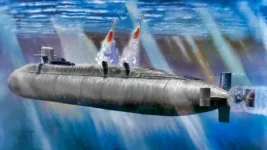- Views: 2K
- Replies: 11

Mazagon Dock Shipbuilders Limited (MDL) and Germany's ThyssenKrupp Marine Systems (TKMS) have entered the final stage of commercial negotiations for a ₹43,000 crore contract to build six advanced stealth submarines for the Indian Navy. This deal, part of Project-75I, represents a major step in modernizing India's underwater capabilities.
Project-75I aims to equip the Indian Navy with next-generation conventional submarines featuring Air-Independent Propulsion (AIP) systems. AIP technology allows submarines to operate submerged for extended periods, significantly increasing their stealth and operational range.
The partnership between MDL, India's leading submarine builder, and TKMS, a global leader in submarine design, seeks to leverage both companies' strengths. The collaboration will combine TKMS's advanced technology with MDL's shipbuilding expertise to produce cutting-edge submarines tailored to India's specific needs.
The first submarine is expected to be delivered within seven years of the contract signing, with the remaining five following in a phased manner. This timeline is crucial given the need to replace the Indian Navy's aging submarine fleet.
The Project-75I submarines will boast several advanced features:
- Air-Independent Propulsion (AIP) Systems: Enabling longer submerged operations for enhanced stealth and efficiency.
- Advanced Combat Systems: Integrating modern sonar, communication, and navigation systems for superior situational awareness and combat readiness.
- High-Endurance Design: Extended range and endurance to support diverse missions in various maritime environments.
- Indigenous Content: A significant focus on incorporating Indian-made components and systems to promote self-reliance under the Aatmanirbhar Bharat initiative.

